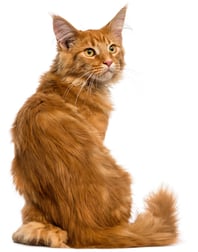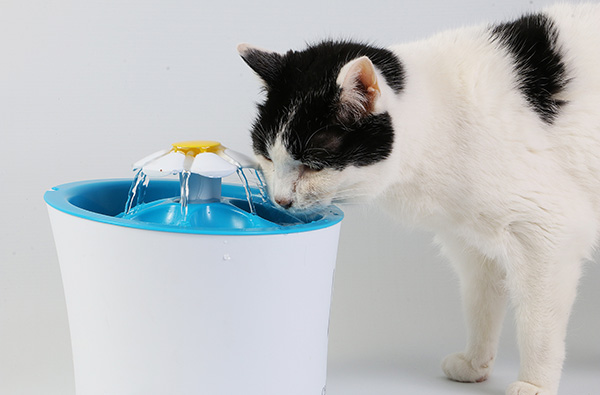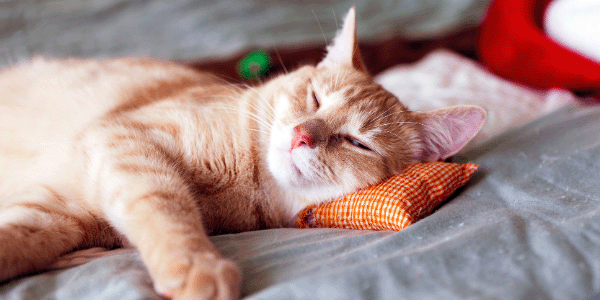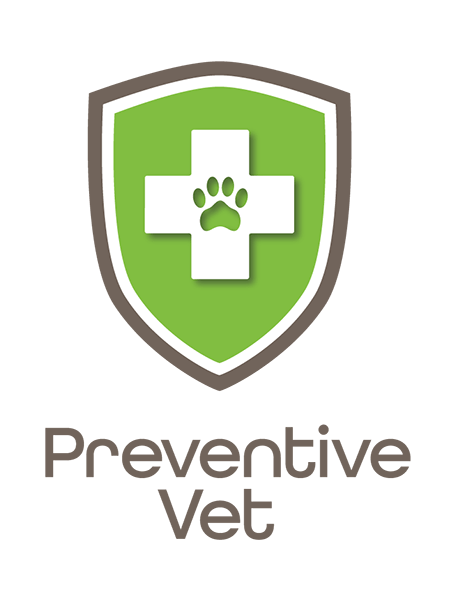- en
This Pet InfoRx® will help you know what to do if your cat has kidney disease, and how to make your cat more comfortable and how to help reverse the effects of this condition.
Quick Links

Lilies: Easter, tiger, stargazer, and the other lilies of the Lilium genus and daylily species Hemerocallis genus are extremely toxic to cats! One nibble on a petal or a leaf, a lick of pollen, or even a lap of the water from a vase can potentially cause a fatal case of acute kidney failure in a cat. Other lilies – including lily of the valley – can also be very dangerous, but just in a different way.
Our mission is to help save dogs' and cats’ lives through our educational content. To support our efforts, this page may contain affiliate links. We earn a commission for qualifying purchases – at no cost to you.
Kidney disease, also known as renal disease, is a common health concern for cats. Kidney disease can come on suddenly (known as acute kidney disease), often after toxin exposure (like raisins or lilies), or come on slowly, sometimes without obvious symptoms (known as chronic kidney disease).
Chronic kidney disease is more common, affecting mostly older cats. In chronic kidney disease, the kidneys lose function over time, and their ability to filter the blood and make urine is decreased. This can lead to a buildup of toxins and the need for the cat to drink a lot of water in an attempt to dilute the toxins and continue producing urine. Cats with chronic disease eventually become very ill and have symptoms like vomiting, diarrhea, weight loss, an unkempt appearance (because they stop grooming themselves). Other problems like high blood pressure and anemia (lack of red blood cells) are common and often cause cats to become weak and have no energy.
Your veterinarian will likely recommend a variety of treatments to help manage your cat’s condition. Unfortunately, chronic kidney disease has no cure, but depending on what stage of kidney disease your cat is in, it can be managed, allowing your cat to lead a longer, more comfortable life.
Fluids are often needed to help cats return to a normal hydration level – your veterinarian may give them under your cat’s skin (known as subcutaneous or SubQ fluids) or recommend that your cat be hospitalized for IV fluids (directly into the vein via a catheter). After your cat is stable, it’s important to provide your cat with clean, fresh water every day and to not limit their intake.
Diet is a mainstay of therapy for cats with kidney disease, and it’s very important to try to keep your cat on a kidney-friendly diet. Often, this involves a specific prescription food (canned and/or dry) in order to keep your cat’s protein, sodium, phosphorus, and other minerals at a specific level that can be easily processed by their kidneys. If feeding your cat a prescription diet isn’t an option, talk to your veterinarian about choosing an over the counter food with as close to the recommended levels as possible. Remember that cats who are ill may not take to new foods well and may associate being sick with a particular diet. For this reason, it’s best to introduce any new foods very slowly and after their symptoms (e.g., nausea, dehydration) are corrected.
Medications may be needed if your cat has high blood pressure, nausea, vomiting, or other symptoms. Be sure to give them exactly as your doctor prescribed, even if your cat doesn’t seem sick, since many cats will hide signs of illness. Medications for some of these conditions will need to be taken for their lifetime.
Your veterinarian may also recommend some additional supplements once your cat is feeling better that have been demonstrated to improve the quality of life in cats with kidney disease.
Monitoring your cat's water intake can be tricky, especially in multiple cat/pet households where shared bowls exist.
Every cat's water needs are different. Your cat's water requirements are based on their weight and their diet (for instance, if they eat only canned food, they might not need as much water).
As a very rough estimate, a 10-pound cat should consume about a cup of water each day.
Remember, you can't judge a cat’s water intake based solely on the amount of water you see them drink. Instead of trying to catch your cat in the act, focus on monitoring the trends of the water level in their bowl at the end of the day (or beginning of the next). When you clean and refill their water bowls each day (which is recommended), take note of how much is left over. Just make sure to fill the bowl to the same level each day, so it's easy to tell when there's a significant change.
Giving your cat a variety of water sources can really help, too. Many cat owners find it beneficial to use a circulating water fountain and/or have multiple water bowls around the house. Read more about water intake and dehydration prevention.

The best thing you can do is to follow your veterinarian’s recommendation on food and medication, and closely monitor your cat’s litter box to ensure they are urinating a normal amount. You may find it helpful to keep a daily calendar of symptoms, appetite, and litter box use so you can track this chronic condition’s effect over time.
Make sure your cat’s bedding, food, water, and litter boxes are always easily accessible to your cat. Avoid placing them on elevated surfaces or up or down stairs that may be difficult for a weak, nauseous, or elderly cat to get to.
Cats who are responding to therapy for their kidney disease should be eating better, vomiting less, and more alert or active.
Your veterinarian may teach you how to assess your cat’s hydration level at home, and if so, you should see improvement in this as well. Over time, your cat should be gaining weight, vomiting less than once a week, and eating regularly.

If your cat is still vomiting regularly (more than once a week), acting like they don't have any energy, having diarrhea, or having trouble getting around, you should make a recheck appointment with your veterinarian. More aggressive therapy may be needed.

In most cases, there is no way to prevent chronic kidney disease. Acute kidney disease brought on by exposure to toxins (lilies, antifreeze, etc.) can only be prevented by limiting your cat’s access to these items.
Early detection is key for most cats since upwards of 75% of kidney function is lost before cats show symptoms, so regular veterinary visits with annual blood work, along with monitoring your cat’s drinking and urination at home, are the best bets at catching kidney disease and getting it under control quickly.
The Pet InfoRx® is made possible, in part, through our partnership with AlignCare®.


© Preventive Vet. All rights reserved. PreventiveVet.com
